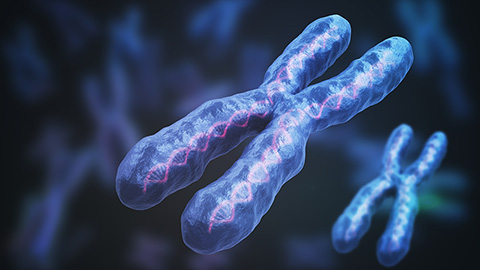From the journals: JLR
We offer a selection of papers recently published in the Journal of Lipid Research. Topics include interactions of the endocannabinoid pathway with the gut microbiome, a novel way to detect turnover of an essential acid in the brain and inhibiting fatty acid oxidation to treat insulin resistance.
Gut feeling: The endocannabinoidome and intestinal microbe connection
The endocannabinoidome is a complex signaling pathway consisting of several G protein-coupled receptors, metabolic enzymes and more than 20 lipid mediators. Recent research links this pathway to intestinal health. With the discovery of endocannabinoid receptors in the gut, mechanisms underlying crosstalk between such receptors and the gut microbiota are being investigated. Scientists have speculated that a dysregulated endocannabinoid system may lead to inflammatory bowel disease and colon cancer.

To take a deep dive into the interactions of the endocannabinoid pathway with the gut microbiome, Claudia Manca and researchers from Canada, Belgium and Italy investigated alterations in the endocannabinoidome in germ-free and conventionally housed mice, both juveniles and adults. Using transcriptomic analysis, they found that expression of several endocannabinoid receptors was reduced in the germ-free mice compared to conventionally housed ones. However, when fecal matter containing natural bacteria from healthy mice was transferred to the germ-free mice, this receptor expression was restored significantly.
Endocannabinoidome signalling tone can also be affected by the basal endocannabinoidome lipid mediator levels as well as receptor expression, so the authors used liquid chromatography-mass spectrometry lipidomics to analyze the different endocannabinoidome lipid mediators and found that their levels were altered substantially in the intestines of both kinds of mice. The levels of some of these molecules were significantly different under germ-free conditions and sensitive to the introduction of fecal matter from conventionally raised mice. Thus, germ-free and conventionally housed mice had differing global gene expression of endocannabinoidome.
The research shows that lack of gut microbiota significantly altered the levels of endocannabinoid receptors as well their effector molecules at the transcriptome level in the small and large intestines of mice. Published in the Journal of Lipid Research, this study provides evidence of direct interaction of the endocannabinoidome with gut microbiota and opens new avenues to investigate the pathophysiological role of endocannabinoid signaling.
A novel method to detect brain DHA turnover
Docosahexaenoic acid, or DHA, is essential for brain development in infants and normal functioning of adult brain. The brain can produce only a limited quantity of this polyunsaturated fatty acid, so it depends on a supply from circulating blood to replenish the metabolized DHA. Decreased DHA levels in the brain are associated with the onset of Alzheimer’s disease, making DHA metabolism in the brain an important topic of research. However, the existing method to study DHA turnover requires infusing stable isotope tracer-labeled fatty acid followed by tracing its metabolism kinetics. Not only is this approach expensive and complicated, but its limitations include inaccurate measurement of steady-state kinetics.
To circumvent these issues, R. J. Scott Lacombe and colleagues at the University of Toronto devised a tracer-free way of studying DHA turnover by measuring the ratio of natural 13C to 12C of DHA with high-precision gas chromatography combustion isotope ratio mass spectrometry. They fed mice with either alpha-linolenic acid or DHA for six weeks and then switched the fatty acids in their diets, followed by analyzing 13C to 12C DHA for another six months. Their results, published in the Journal of Lipid Research, correlate to findings using isotope tracers.
Treating insulin resistance: To err on the side of caution
In the pathological condition known as insulin resistance, cells fail to respond to insulin, resulting in increased blood glucose levels. This can result in increased risk of Type 2 diabetes, heart attacks, strokes and cancer. An underlying cause of this condition is an excess of circulating fatty acids, which promotes the oxidation of fat over glucose. Thus, inhibition of fatty acid oxidation, or FAOX, has been suggested as a treatment for insulin resistance.
Anne-Marie Lundsgaard and a team from Germany and Denmark performed a collaborative study to understand the consequences of inhibiting FAOX on overall metabolism. They used etomoxir to inhibit FAOX in mice, which in the short term resulted in increased glucose oxidation and lowered blood glucose as expected. However, within days, the treatment also resulted in triglyceride accumulation in the heart and liver. In fact, when etomoxir was administered to mice over a prolonged period, it resulted in hepatic steatosis or fatty liver disease and glucose intolerance. Their findings, published in the Journal of Lipid Research, shed light on the long-term consequences of FAOX inhibition for treating insulin resistance, which could move researchers to rethink such treatment strategies.
Enjoy reading ASBMB Today?
Become a member to receive the print edition four times a year and the digital edition monthly.
Learn moreGet the latest from ASBMB Today
Enter your email address, and we’ll send you a weekly email with recent articles, interviews and more.
Latest in Science
Science highlights or most popular articles

Bacteriophage protein could make queso fresco safer
Researchers characterized the structure and function of PlyP100, a bacteriophage protein that shows promise as a food-safe antimicrobial for preventing Listeria monocytogenes growth in fresh cheeses.

Building the blueprint to block HIV
Wesley Sundquist will present his work on the HIV capsid and revolutionary drug, Lenacapavir, at the ASBMB Annual Meeting, March 7–10, in Maryland.

Gut microbes hijack cancer pathway in high-fat diets
Researchers at the Feinstein Institutes for Medical Research found that a high-fat diet increases ammonia-producing bacteria in the gut microbiome of mice, which in turn disrupts TGF-β signaling and promotes colorectal cancer.

Mapping fentanyl’s cellular footprint
Using a new imaging method, researchers at State University of New York at Buffalo traced fentanyl’s effects inside brain immune cells, revealing how the drug alters lipid droplets, pointing to new paths for addiction diagnostics.

Designing life’s building blocks with AI
Tanja Kortemme, a professor at the University of California, San Francisco, will discuss her research using computational biology to engineer proteins at the 2026 ASBMB Annual Meeting.

Cholesterol as a novel biomarker for Fragile X syndrome
Researchers in Quebec identified lower levels of a brain cholesterol metabolite, 24-hydroxycholesterol, in patients with fragile X syndrome, a finding that could provide a simple blood-based biomarker for understanding and managing the condition.

